If you plan to visit Cusco in June 2025, don’t miss the Inti Raymi, one of Peru’s most iconic ancestral celebrations and a globally recognized event. This vibrant festival immerses you in a dazzling spectacle of music, color, and centuries-old traditions. With profound cultural and touristic significance, Inti Raymi strengthens local pride and draws thousands of visitors worldwide. Experience the magic of this unforgettable celebration!
- What is Inti Raymi?
- Inti Raymi Today
- Inti Raymi 2025: Full Schedule, Sacred Sites, and Tips to Experience the Peak of Inca Culture
- Inti Raymi: The Grand Celebration of the Sun God
- Inti Raymi 2025: Full Detailed Schedule
- Discover What Happens at Each Stage of Inti Raymi
- Inti Raymi 2025 Tickets
- Essential Tips for Inti Raymi 2025
- What to Wear to Inti Raymi
- Best Spots to Experience Inti Raymi 2025 (Free & Paid Options)
- Inti Raymi: Essential FAQ About Peru’s Sun Festival.
- You might also like:
What is Inti Raymi?
One of the most sacred celebrations of the Inca Empire, the Inti Raymi, was a religious ceremony honoring Inti (the Sun God), the core of Andean cosmology. Originating in Cusco, the capital of Tawantinsuyo, this 15-day festival featured rituals, sacrifices, dances, and offerings to the solar deity. The last Inti Raymi, presided over by an Inca emperor, occurred in 1535, just before the Spanish conquest.
Today, Inti Raymi is a breathtaking theatrical reenactment that draws thousands of national and international tourists, solidifying its place as one of Peru’s most significant cultural events. More than just a revival of Inca grandeur, this festival strengthens Peruvians’ ancestral identity and captivates audiences worldwide.



The Sun in Inti Raymi
In Inca cosmology, the Sun (Inti) reigned as the supreme deity, the source of life, energy, and cosmic order. The Inti Raymi festival celebrated the start of a new annual cycle through sacred rituals of gratitude and reverence. The Incas built monumental temples like Qoricancha and presented offerings and sacrifices to secure the Sun God’s blessings.
Far more than a religious ceremony, Inti Raymi was a pivotal political and social event, reinforcing the bond between the Sapa Inca (emperor), the state, and the people. This grand celebration embodied the empire’s unity, spirituality, and reverence for nature’s most potent force.

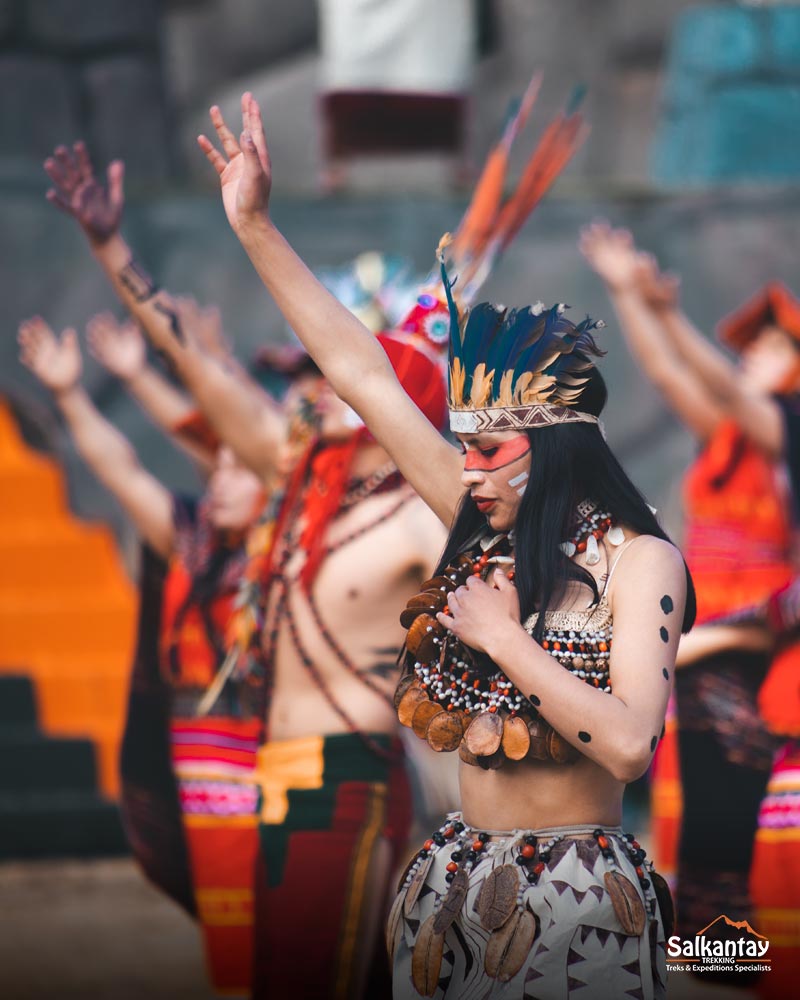
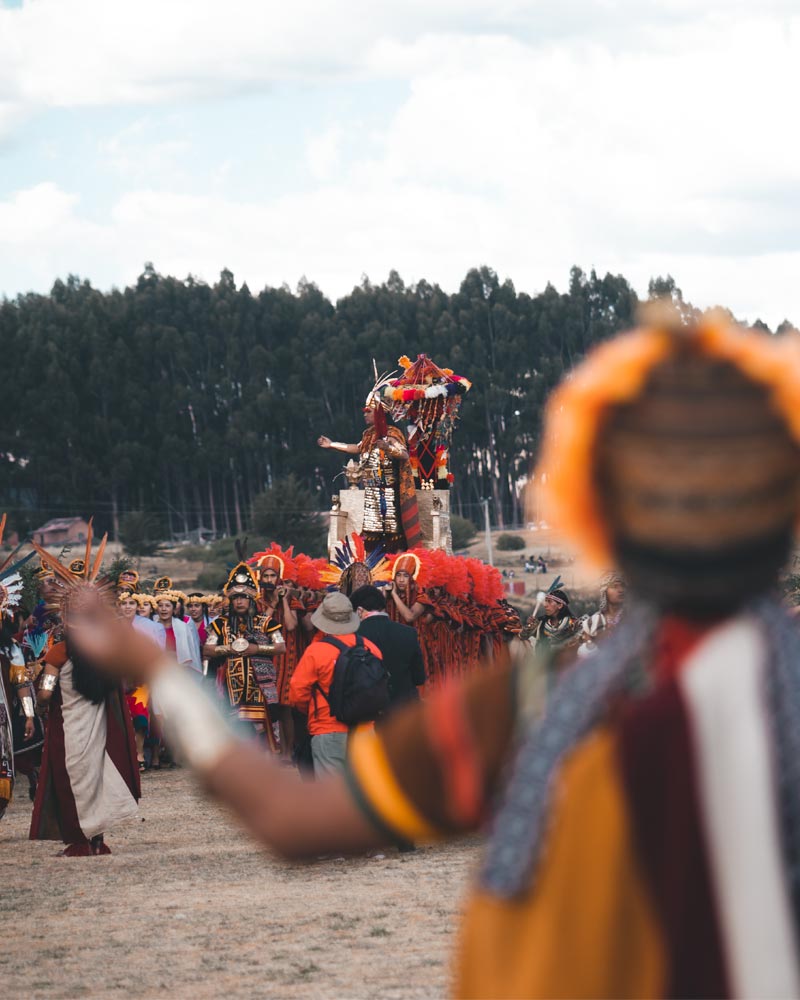
Inti Raymi in the Tahuantinsuyo Era
Established by Pachacútec in the 15th century, Inti Raymi (Festival of the Sun) stood as the most magnificent celebration of the Inca Empire. This sacred ceremony united key figures of imperial society:
- The Acllas: Virgins of the Sun
Chosen as young girls, these women served Inti (the Sun God) and the Sapa Inca (emperor). Residing in Acllahuasis (House of the Chosen Women), they wove sacred garments, prepared offerings, and maintained ritual fires. Some became secondary wives of the Inca or nobles, playing a vital role in fertility and abundance ceremonies during Inti Raymi. - The Ayllus: Community Clans
As the backbone of Inca society, these kinship-based communities worked collectively in farming, construction, and crafts while paying tribute to the state. During Inti Raymi, each ayllu sent representatives with traditional dances and offerings to honor the Sun. - The Imperial Army
The military force that protected and expanded the Tahuantinsuyo paraded in ceremonial armor and weapons, symbolizing the Inca’s might. Their presence reinforced the sacred link between religion and political power. - Representatives of the Four Suyos (refers to the four regions of the Inca Empire)
Delegations from Chinchaysuyo, Collasuyo, Antisuyo, and Contisuyo arrived bearing textiles, metals, and food as tribute, renewing alliances and showcasing the empire’s cultural diversity.
The ceremony began with the Sapa Inca’s triumphal entrance into Cusco’s Plaza de Armas or Sacsayhuamán, escorted by:
- Acllas, scattering flowers as symbols of purity.
- Pichaq, sweeping away evil spirits with straw brooms.
- The Kumillo, carrying the Achiwa (a multicolored feathered parasol).
Despite Spanish suppression, Inti Raymi survived in secrecy and was later preserved in Inca Garcilaso de la Vega’s “Comentarios Reales”, a pivotal text for understanding its legacy.

The Modern Revival of Inti Raymi
In 1943, Peruvian intellectual Humberto Vidal Unda proposed reviving this ancient festival to the American Art Institute. By 1944, the first modern reenactment occurred, officially establishing June 24 as “Cusco Day.”
Faustino Espinoza Navarro, a celebrated writer and founder of the Quechua Language Academy, made history as the first actor to portray the Inca, cementing his legacy in cultural preservation.
Key Fact:
- In 2001, the Peruvian government declared Inti Raymi a National Cultural Heritage event, honoring its profound significance.

Inti Raymi Today
The Inti Raymi, or “Festival of the Sun,” has endured for centuries, evolving while preserving its sacred essence. Though today’s celebration stays true to its Inca roots, key distinctions set the ancient ritual apart from its modern reenactment.
Inca Inti Raymi vs. Modern Inti Raymi: A Comparative Analysis
| Aspect | Inca Empire Inti Raymi (1430-1532 AD) | Modern Inti Raymi (Since 1944) |
|---|---|---|
| Activity | It was a sacred religious ceremony with rituals, animal sacrifices, and offerings to Inti (the Sun God). | Theatrical reenactment for cultural and touristic purposes, based on Inca traditions. Declared National Cultural Heritage in 2001. |
| Duration | 15 days (before the winter solstice). | 1 day (June 24, “Cusco Day”). Includes pre-dawn Qhapaq Inti (Sun Greeting). |
| Attendance | 50,000 (Tahuantinsuyo inhabitants: nobles, priests, warriors). | 60,000+ spectators (tourists/locals) + 1,000 actors. Live-streamed globally. |
| Purpose | Sun worship, agricultural renewal, and legitimization of the Sapa Inca’s power. | Cultural preservation, tourism promotion, and economic driver for Cusco. |
| Locations | Qoricancha (Sun Temple), Huacaypata (modern Plaza de Armas), Sacsayhuamán. | 1. Qoricancha (opening). 2. Plaza de Armas (symbolic “two-worlds encounter”). 3. Sacsayhuamán (main event with spectator stands). |
| Rituals | Animal sacrifices, chicha/coca leaf offerings, sacred fire. | Choreographed spectacle with Quechua speeches, symbolic offerings (no sacrifices). Includes: – Sun Greeting – Coca Reading, – Llama Sacrifice (simulated), – Sacred Fire Lighting, – Chicha Toast. |
| Attire | Fine alpaca, gold, and exotic bird feathers (exclusive noble designs). | Handmade replicas: – Unku (tunic), – Mascaipacha (imperial fringe), – silver/jewelry. |
| Language | Classical Quechua (official imperial language). | Quechua/Spanish (with translations). Script approved by the Quechua Language Academy. |
| Funding | State-funded (tributes from suyos). | Corporate sponsorships, regional government, and ticket sales (from $50). |
| Global Reach | Limited to Tahuantinsuyo. | International phenomenon: Featured on NatGeo/BBC, UNESCO-recognized, attracts influencers/documentaries. |



Inti Raymi 2025: Full Schedule, Sacred Sites, and Tips to Experience the Peak of Inca Culture
Inti Raymi: The Grand Celebration of the Sun God
On June 24, 2025, Cusco will come alive with one of the most iconic traditions of the Inca Empire, Inti Raymi, an ancient ceremony honoring the Sun God (Inti). Recognized as a National Cultural Heritage event, this spectacular celebration draws thousands of global visitors to its three sacred stages, blending mesmerizing rituals, vibrant music, traditional dance, and a profound spiritual connection to Andean cosmology. Discover the complete schedule, must-visit locations, and expert tips to immerse yourself in this unforgettable cultural experience.
Inti Raymi 2025: Full Detailed Schedule
| Stage | Location | Time | Duration | Main Event |
|---|---|---|---|---|
| First Part | Qoricancha (Temple of the Sun) | 9:00a.mm. | 45 min | Greeting to the Sun” with acllas (chosen women), musicians, and dancers. |
| The Inca and his entourage enter Intikijllu (now Loreto Street) toward the Plaza de Armas. | ||||
| Second Part | Plaza de Armas(Huaqaypata) | 10:30 a. m. (aprox.) | 1 hour | “Meeting of Times & Coca Ceremony.” |
| The Inca and his retinue exited via Saphy Street, heading to Sacsayhuamán. | ||||
| Third Part | Sacsayhuamán (Main Esplanade) | 1:00 p.m.(aprox.) | 2 hours | Central Ceremony: Ritual offerings, symbolic sacrifice, and dances honoring Inti (Sun God). |
| End Time: 3:30 PM (may extend). | ||||
Discover What Happens at Each Stage of Inti Raymi
Journey through the sacred sites that revive the Inca Empire’s grandeur, from the majestic Qoricancha to the towering Sacsayhuamán Fortress, passing through the vibrant heart of Cusco at the Plaza de Armas.
1. Qoricancha
The ceremony begins with a breathtaking ritual at Qoricancha, the ancient Temple of the Sun. As dawn illuminates its golden walls, the Inca makes his first public appearance, solemnly invoking Inti (the Sun God), thanking him for life, sustenance, and nature’s power. Surrounded by priests and Andean dancers in traditional attire, this act marks the start of a new solar cycle with a unique spiritual energy that draws thousands of visitors yearly.

2. Main Square
At the historic Plaza de Armas (formerly Huacaypata), the Inca receives representatives from the four regions of Tahuantinsuyo (Chinchaysuyo, Antisuyo, Collasuyo, Contisuyo). Here, ancestral rituals unfold solar new year prophecies by amautas (wise men), a mesmerizing collective dance symbolizing unity, and a modern addition: the Inca’s symbolic meeting with Cusco’s mayor, who reports on the city’s governance. This fusion of living history, performance art, and ancient tradition captivates global travelers.

3. Sacsayhuamán
The megalithic esplanade of Sacsayhuamán hosts the climactic ceremony, one of Latin America’s grandest cultural spectacles. The Inca’s high priests conduct symbolic offerings to Pachamama (Mother Earth), sacred dances, chicha (corn beer) rituals, and the traditional llama sacrifice, a divination act foretelling the new solar cycle. With 700+ performers, this breathtaking blend of art, spirituality, and Andean tradition against a monumental backdrop makes it a must-see for authentic cultural travel in Peru.

Inti Raymi 2025 Tickets
The Cusco Municipal Festivities Company (EMUFEC) exclusively manages Inti Raymi ticket sales annually. Official tickets for the 2025 celebration are available through Teleticket, Peru’s leading event ticketing platform.
Key Details:
Purchase directly (no intermediaries) at the official website:
https://teleticket.com.pe/inti-raymi-2025
Qorikancha
Qorikancha grandstand
| Ticket Prices | Peruvian Soles (PEN) | US Dollars (USD) |
|---|---|---|
| General Admission | S/.177.00 | 49.00 USD |
| Children | S/. 100.00 | 28.00 USD |
| Tour guides | S/. 100.00 | 28.00 USD |
| Peruvian Nationals | S/. 100.00 | 28.00 USD |
The official grandstand is on El Sol Avenue,It offers directly across from Qoricancha’s ceremonial platform. on El Sol Avenue, offering front-row seats to the Inca Sun Temple rituals.

Saqsayhuamán
Green grandstand
| Ticket Prices | Peruvian Soles (PEN) | US Dollars (USD) |
|---|---|---|
| General Admission | S/. 455.00 | 125.00 USD |
| Children | S/. 221.00 | 61.00 USD |
| Tour guides | S/. 221.00 | 61.00 USD |
| Peruvian Nationals | S/. 221.00 | 61.00 USD |
Red grandstand
| Ticket Prices | Peruvian soles (PEN) | US Dollars (USD) |
|---|---|---|
| General Admission | S/. 636.00 | 174.00 USD |
| Children | S/. 302.00 | 83.00 USD |
| Tour guides | S/. 302.00 | 83.00 USD |
Orange grandstand
| Tickets Prices | Peruvian soles (PEN) | US Dollars (USD) |
|---|---|---|
| General Admission | S/. 677.00 | 185.00 USD |
| Niños | S/. 321.00 | 88.00 USD |
| Tour guides | S/. 321.00 | 88.00 USD |

Important Notice: Valid ticket sales from 04/07/25 to 06/23/25 – Book Early!
Essential Tips for Inti Raymi 2025
- Book Early: Tickets for Qoricancha and Sacsayhuamán often sell out months ahead.
- Dress Smart: For sunny days but freezing nights, pack a hat, sunscreen, sunglasses, and a warm jacket.
- Language: The ceremony is in Quechua, but guided tours offer live translations.
- Transport: Traffic restrictions apply to public transport or organized tours.
- Cash Only: Many vendors don’t accept cards, and ATMs near Plaza de Armas get crowded.
- Stay Alert: Crowds are enormous. Keep valuables hidden and stay in designated areas.
- Bring Snacks & Water. Limited food vendors nearby; ceremonies are long.
- Arrive Early: The Best spots fill up fast, so get there before the crowds.
- Altitude Ready: Cusco sits at 11,150 ft (3,400m). hydrate and avoid altitude sickness.
- Photography: Bring extra batteries and memory, but ask before photographing locals.
- Respect Traditions: This ceremony is sacred; follow guidelines and avoid disruptions.
- Virtual Option: No ticket? Watch live broadcasts in Cusco’s main squares.
What to Wear to Inti Raymi
1. Layered Clothing (Key to Surviving Cusco’s Weather!)
- Base Layer (Thermal): Short or long-sleeve moisture-wicking shirt.
- Mid Layer (Warmth): Wool sweater, fleece, or thermal jacket.
- Outer Layer (Weatherproof): Windbreaker, rain jacket, or traditional Andean poncho.
- Bottoms: Comfortable jeans, trekking pants, or convertible hiking shorts.
2. Footwear Essentials
- Sturdy Shoes: Hiking boots or grippy sneakers (Sacsayhuamán has uneven stone terrain!)
- Avoid: Sandals or flimsy shoes. You’ll be walking on ancient cobblestones.
3. Must-Have Accessories
- Andean Beanie (Chullo): Keeps you warm during chilly dawn/evening ceremonies
- Scarf or Shawl: Blocks wind during open-air events
- Sunglasses & SPF 50+ Sunscreen: Cusco’s high-altitude sun burns fast, even in winter.
What NOT to Bring:
- Overly bulky coats (opt for breathable layers instead)
- Uncomfortable shoes (you’ll walk 5K+ steps on stone paths)
- Large luggage (backpacks > suitcases for Sacsayhuamán’s steep entry)
Sunny Day Pro Tip:
Cusco’s midday sun is intense. Dress in removable layers to stay cool by day and warm by night!.

Best Spots to Experience Inti Raymi 2025 (Free & Paid Options)
Restaurants and cafes
- Ceremonial Route: Qoricancha → Plaza de Armas
- Ceremonial Route: Plaza de Armas
- Casa Cusqueña
- Paddy’s Irish Pub
- LIMO peruano nikkei
- Hanz Gastronomique
- Fusion Andina
- La Retama Restaurant
- Morena Peruvian Kitchen
- Mulli Restaurant
- Don Pancho Taberna Peruana
- Mistura Grill Cusco
- InkaGrill
- Cafeto 109
- Fuego, Burgers and Barbecue Restaurant
- Tunupa Plaza de Armas
- Calle del Medio Restaurante Bar
- Experiences Arte y Café Cusco
- Cappuccino Cusco Café
- Micaela Restaurant
- Plaza Café
- Ceremonial Route: Plateros Street → Saphi street.
Alternative Inti Raymi viewing locations.
- First Ceremony Qoricancha:
Free Access: Stand on the temple’s front steps or nearby viewpoints (arrive by 5 AM for the best spots). - Second Ceremony Plaza de Armas del Cusco:
Restaurant/Hotel Balconies: Many offer paid seating with prime views (book months in advance). - Main Ceremony Sacsayhuamán:
- Paid Grandstands: Official tickets sell out fast (secure early).
- Free Hillside Views: Cristo Blanco lookout or Saqsayhuamán slopes (arrive by 9 AM for space).
Pro Tip: Stay at These Prime Cusco Hotels for Unmatched Inti Raymi Views.
For the ultimate Inti Raymi experience, book accommodations near Qoricancha or Plaza de Armas with direct ceremony views. Top picks include:
- Palacio del Inka, a Luxury Collection Hotel (Cusco).
- Abittare Hotel.
- Hotel Unaytambo Cusco.
- Loreto Hotel Boutique.
- Hotel Plaza de Armas Cusco.
These premium hotels offer more than just comfort; their strategically positioned windows provide exclusive benefits:
- Front-row views of Inti Raymi’s ceremonial processions from your room.
- Unobstructed vantage points to watch the grand parade route to Qoricancha and Plaza de Armas.
- Avoid the crowds while enjoying the spectacular reenactment in complete privacy.
Inti Raymi: Essential FAQ About Peru’s Sun Festival.
1. What is the Inti Raymi Festival?
The Inti Raymi is a magnificent ancient Inca celebration honoring Inti, the Sun God, held every June 24th in Cusco to mark the winter solstice and Andean New Year. This UNESCO-recognized cultural treasure features breathtaking rituals at sacred sites like Qoricancha and Sacsayhuamán, where over 700 performers recreate Inca ceremonies with traditional music, colorful dances, and symbolic offerings.
2. Why Was Inti Raymi Banned?
Spanish conquistadors outlawed Inti Raymi in the 16th century as part of their campaign to impose Catholicism and eradicate indigenous religions. This suppression of Inca traditions lasted centuries until 1944, when Peruvian intellectuals and artists revived the festival. Today, the reimagined Inti Raymi stands as Peru’s most spectacular cultural event, drawing over 50,000 annual visitors to Cusco while preserving authentic Quechua rituals through breathtaking theatrical performances at Sacsayhuamán and other sacred sites.
3. Why is Inti Raymi Celebrated on June 24th?
The Inti Raymi, or Festival of the Sun, takes place every June 24th to commemorate the winter solstice in the Southern Hemisphere, the shortest day and longest night of the year that marks the beginning of the Inca New Year. This precise date was sacred to the Incas as it represented the sun’s symbolic rebirth, when their astronomers at Qoricancha temple would witness the sun’s gradual return through perfectly aligned stone windows.
4. What is sacrificed during Inti Raymi?
Inti Raymi, the Festival of the Sun, reached its most profound meaning through powerful religious ceremonies. At the heart of this ancient Inca celebration were sacred rituals, traditional dances, symbolic offerings, and animal sacrifices to honor the Sun God, Inti. During the main ceremony, Inca priests sacrificed a pure black llama, ceremonially removing its heart as a divine offering to ensure prosperity, fertility, and harmony with the cosmos.
5. What food is eaten during Inti Raymi?
Families enjoy a traditional Andean feast during Inti Raymi, Peru’s vibrant festival honoring the Sun God. One of the most iconic dishes is Huatia, a centuries-old method of cooking native potatoes and tubers in rustic earthen ovens. Shared during lively outdoor picnics, this ancestral dish celebrates Inca heritage while reviving the rich culinary traditions and communal spirit of the Andes.
6. What does “Inti Raymi” mean in Spanish?
“Inti Raymi” is a Quechua term that translates literally to “Festival of the Sun,” where:
- Inti = Sun.
- Raymi = Festival or celebration.
As one of the most important ceremonies of the Inca Empire, Inti Raymi was dedicated to honoring Inti, the Sun God, symbolizing light, life, and divine power in Inca culture.
7. What activities take place during Inti Raymi?
Inti Raymi is a full-day cultural and spiritual spectacle filled with music, ritual, and historical reenactment. The celebration begins at Qorikancha, the ancient Temple of the Sun, with ceremonial offerings. It continues with a vibrant procession of the Sapa Inca and his royal court through Cusco’s Plaza de Armas, featuring traditional Andean music and dance. The grand finale unfolds at the Sacsayhuamán fortress, where the Sapa Inca leads sacred rituals like the “Sacred Fire” and a symbolic llama sacrifice, all performed in Quechua and brought to life with powerful choreography and ancestral chants.
8. What are the three stages of Inti Raymi?
Inti Raymi unfolds in three distinct stages, each set in a historic location and with its duration. The celebration begins at Qorikancha, the Temple of the Sun, with a 45-minute ceremony. It then moves to Cusco’s Main Square for a one-hour public performance filled with music and tradition. The final and most elaborate stage, lasting approximately two hours, takes place at the Sacsayhuamán fortress, where the full reenactment of Inca rituals captivates thousands of spectators with its cultural richness and dramatic storytelling.
9. What type of clothing is worn during Inti Raymi?
Participants in Inti Raymi wear elaborate costumes adorned with feathers and the vibrant rainbow colors of the festival’s sacred flag. These traditional garments reflect Inca nobility and spiritual symbolism. The Sapa Inca, dressed in regal attire, pours chicha, a ceremonial corn drink, as an offering to the Sun God, alongside the now-symbolic llama sacrifice, to bless the arrival of spring and ensure a prosperous harvest.
10. What type of music is performed during Inti Raymi?
During Inti Raymi, Cusco’s legendary Festival of the Sun, the air fills with ancestral Andean melodies played on traditional instruments like the zampoña (pan flute), wanqara (ceremonial drum), and quena (Andean flute). The music blends native genres such as huaynos, taquiraris, and sacred chants in Quechua, creating a powerful soundscape that honors Inca heritage and evokes the spiritual energy of the Andes.
11. What is another name for Inti Raymi?
Inti Raymi is also known as the “Festival of the Sun” or the “Winter Solstice Festival.”
12 Where is Inti Raymi celebrated?
The Inti Raymi, also known as the Festival of the Sun, is primarily celebrated in Cusco, Peru, the ancient capital of the Inca Empire. However, it is also observed in other parts of the Andes, where indigenous communities continue to uphold this ancient tradition.
- Cusco, Perú (Main Celebration)
The largest and most famous ceremony takes place at the Sacsayhuamán Fortress. It features a stunning ritual reenactment that captivates both locals and tourists. - Ecuador (Inti Raymi Festival)
Particularly in the indigenous communities of the Sierra, where it is also referred to as the “Fiesta del Sol” (Festival of the Sun), the celebrations honor the sun’s power and significance to their culture. - Bolivia (Willkakuti, Andean New Year)
In regions such as Tiwanaku, near La Paz, celebrations are closely tied to the winter solstice, marking a time of renewal and connection with nature.
13. Why Did the Incas Sacrifice Llamas?
Archaeologists have discovered that these exceptionally well-preserved llamas, sacrificed over 500 years ago, were not only offered to the gods to ensure bountiful harvests, healthy livestock, and victory in battle, but also to solidify control over newly conquered populations. This groundbreaking finding redefines our understanding of sacred rituals in ancient civilizations.
14. How Long Does Inti Raymi Last in Peru?
The Inti Raymi, the ancient Inca festival honoring the Sun God, is a one-day annual event on June 24th. This spectacular celebration features recreations of traditional Inca rituals, including processions, music, dances, and feasts, a vibrant tribute to Peru’s rich heritage.
15. What Should I Wear to Attend?
To fully enjoy Inti Raymi, dress for the unpredictable Andean weather: cold mornings, intense sun, and long hours outdoors. Layer up with warm clothing, wear comfortable shoes, and add a traditional touch (like a colorful poncho or hat) to immerse yourself like a true traveler!
16. Can I Take Photos?
Absolutely! Capture breathtaking shots of this sacred ceremony and share its energy with the world, but always respectfully. Avoid blocking others’ views or disrupting the rituals. Document every moment authentically, preserving the essence of this millennia-old tradition while creating memories that reflect its grandeur.
17. Is There a Special Requirement to Attend Inti Raymi?
To experience Inti Raymi, simply secure your tickets in advance and arrive with an open heart, ready to embrace Inca traditions. No complex requirements exist, just respectful participation and adherence to organizers’ guidelines for an authentic, memorable celebration.
18. What Does the Sun Symbolize in Inti Raymi?
The festival venerates Inti, the Andean Sun God and sacred life-giver, marking the new annual cycle with rituals and offerings. As the ceremony’s focal point, the Sun receives deep reverence as the source of light, energy, and cosmic order in Inca cosmology.
Additional Recommendations:
- Attend the Pre-Ceremony Rehearsals: The dress rehearsals held before the main event will deepen your understanding of this ancient tradition and enhance your experience. These rehearsals occur nightly at the Qoricancha esplanade two months before the celebration.
- Explore Cusco’s Must-See Attractions: Make the most of your trip by discovering iconic wonders like Machu Picchu, the Sacred Valley of the Incas, and Cusco’s breathtaking historic center, a UNESCO World Heritage Site.
- Savor Authentic Cusco Cuisine: Indulge in traditional Andean dishes like papa a la huancaína (potatoes in spicy cheese sauce), lomo saltado (stir-fried beef), and roasted cuy (guinea pig) for a unique culinary adventure.

Turn Your Inti Raymi Trip into an Unforgettable Adventure Rich in Culture, Landscapes, & Flavors!


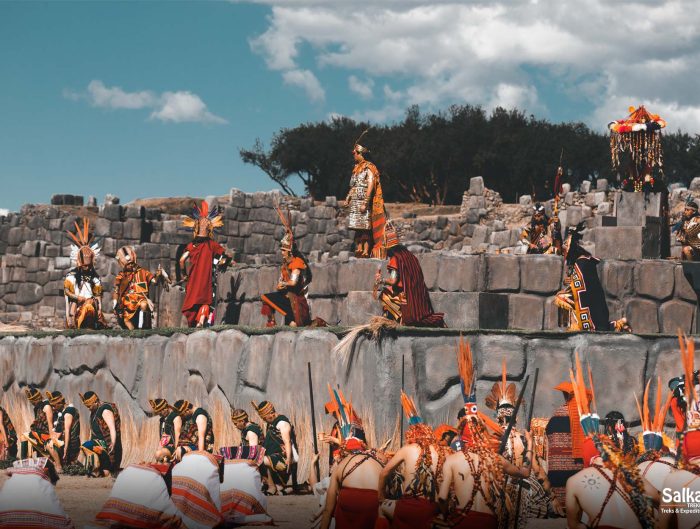


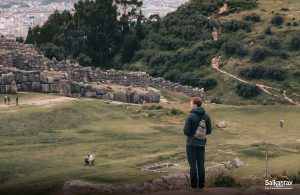
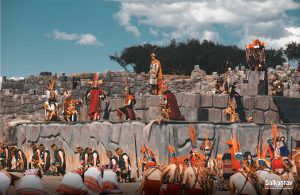
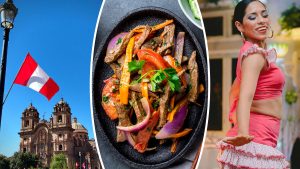



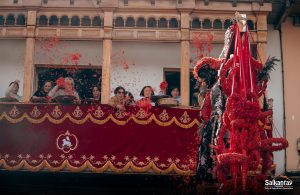
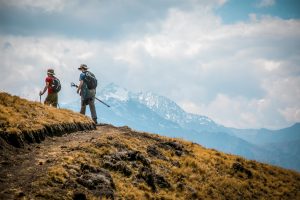
Leave A Reply